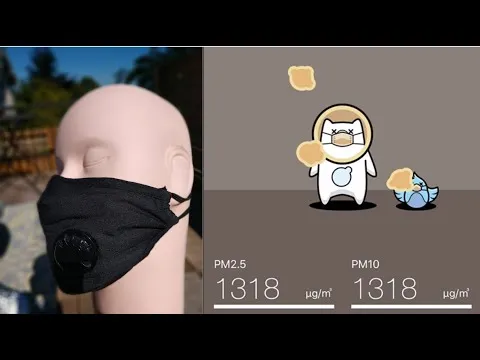I'm excited to announce a special guest to help answer the question of whether anti-pollution masks are effective at filtering unhealthy air. My guest is completely neutral, and has been the lead researcher (and test subject) on one of the most comprehensive pollution mask studies to date. Allow me to introduce Cindy:

The experiment worked like this: Cindy, our mask-wearing dummy and pollution monitor # 1was placed inside of a sealed chamber with an intake and outtake valve. The intake valve was attached to an aluminum tube fixed to a grill top. A second tube drilled through the mannequin at mouth-level exited through the outtake valve, which was attached to a transfer pump that pulled the air into a second (filtered) chamber with pollution monitor # 2.

Cindy isn’t particularly talkative, so she’s asked that I use pictures to explain how we outfitted here with the pollution mask. Here’s an image that shows the first step (trigger warning... simulated mannequin violence follows):

You might be screaming "WHY DID YOU DO THAT TO CINDY?!" Being a latex doll, we had to run a tube to simulate breathing, which required, erm… a hole to run the hose through. (Sorry, Cindy).

Next, we outfitted Cindy with the pollution mask you saw in the first picture. The mask contains a disposable PM2.5 filter manufactured to N95 specifications. Once she was adequately equipped, it was time for the hotbox:

The transfer pump allowed us to pull in smoke from the charcoal grill, which was then measured for pm2.5 concentration. (PM2.5 is a type of particulate matter most often associated with pollutants like wildfire smoke, vehicle exhaust, fertilizers and even everyday dust.) The left-hand scores on the chart below show the ambient PM2.5 we detected in the control chamber, before the air was pulled through the pollution-mask worn by our dummy. The middle scores show the concentration of PM2.5 after filtration. Overall, the pollution was reduced by an average of 90%.

This level of reduction is pretty darn good when we’re considering ambient air pollution. Considering that the EPA rates PM2.5 concentrations of 100 ug/m3 as “Unhealthy”, whereas a concentration of 10 ug/m3 is “good”, 90% filtration is going to be more than enough for most levels of outdoor pollution. It’s important to remember that we’re not talking about certifying these masks for industrial use, and a pollution mask isn’t going to turn you into Ironman, but as long as your mask is well fitted, and the filter is at least an N95 equivalent, our experiment supported their effectiveness for outdoor use on high-pollution days.
